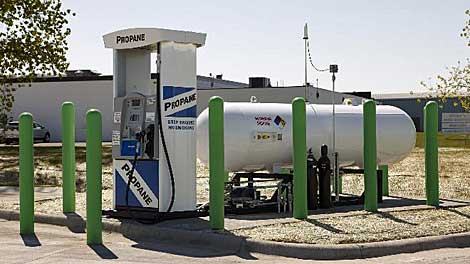
Graphic courtesy: Waste2Tricity
The folks over at Waste2Tricity in the UK believe they’ve hit upon a process and combination of technologies that are going to change the economics of the energy-from-waste (EfW) market. The consortium is putting together an EfW system and strategic plan ultimately based on two core components: at the front-end, plasma gasification technology is to be used to “gasify” waste that will feed clean, high-efficiency alkaline fuel cells that will produce electricity and hydrogen. Initially, W2T proposes using internal combustion engines (ICEs) on the back-end.
Aiming to turn urban waste into a local, renewable clean energy resource, UK governments since at least 2009 have been soliciting input from and providing incentives to private industry in the search for cost-effective EfW solutions. Waste2Tricity (W2T) says its plasma gasification-fuel cell system is not only head-and-shoulders above competing alternatives in terms of clean energy, it will be of a modular, scalable nature that will enable the cost-effective construction of EfW plants up and down the country, eliminating trash and waste and producing clean, low-carbon energy locally, at source. Adding to the possible benefits is the potential to use surplus hydrogen to stock hydrogen vehicle fueling stations.
“We’ll be running at the 10-MW scale taking waste as a feedstock. It’s much more distributed, and you’re avoiding the issue of grid losses [by minimizing transmission distance],” explained Howard White, a consultant to W2T. “You’re not having the grid losses and you’re boosting your efficiency because a lot of feedstock is essentially renewable and local.”
The High & Rising Cost of Waste
The W2T consortium — made up of alkaline fuel cell developer AFC Energy and AlterNRG, amongst others, was formed in 2009 as a result of rising fossil fuel costs over the past decade.
Since 2002, the high and rising price of fossil fuels has fundamentally changed the way government, business, and society look at energy, prompting individuals and groups across all three spheres to cast a wider net in the search for clean, renewable energy alternatives, as well ways to reduce the amount of energy that’s wasted.
At the same time, rising urban populations have led to more and more trash and waste, and less space to bury it. Reuse and recycling has increased, but they’re nowhere near large enough in scale today to effectively cope with the issue. That’s meant rising taxes for the public, including businesses, to haul away and bury or burn trash.
Burning it by conventional means has traditionally meant incinerating waste, and increasingly making use of the heat produced to fuel coal-fired electricity generation. It’s an old, centralized, large-scale, inefficient and very polluting means of converting waste to energy. Though, that doesn’t have to be, nor should it be, given advances in technology, W2T’s White and John Hall pointed out.
The UK’s Waste-from-Energy Drive
Since at least 2009, UK governments have been working on policies and the right combination of market-based incentives to commercialize a new generation of more efficient, much greener EfW plants.
“There’s been a drive to find a technology that will efficiently extract energy from waste, from renewable carbon feedstocks,” White elaborated. “The market has developed and there’s certainly been a lot of government interest in promoting advanced technologies. On the UK government side, that’s been focused on Advanced Conversion Technology — pyrolysis, gasification and anaerobic digestion. We have focused on gasification in W2T.”
After much back-and-forth between government and varied, often competing commercial and public interest stakeholders, a potential turning point occurred last August in the UK’s EfW market, continued W2T managing director John Hall: Air Products and AlterNRG received local council planning permission to build a utility-scale, advanced EfW plant in Teesside in the Tees Valley.
Air Products-AlterNRG’s proposed advanced waste gasification plant has been designed to process more than 300,000 metric tons of waste and produce 49-MW of electrical power, enough for some 50,000 homes. Plasma gasification equipment is to process the waste and channel it into natural gas turbines, which will generate electricity.
“The final decision depends on the future of the ROC (Renewable Obligation Certificate) regime,” Hall explained, a clean energy program established around 10 years ago along the lines of state REC programs that exist in the US.
A much anticipated reformulating of UK ROC rates — Electricity Market Reform (EMR) — for various forms of clean energy production — wind, solar, landfill gas, hydroelectric, etc. — that’s been delayed repeatedly now appears imminent. The new ROC rates will have a major impact on the financial viability and returns available to clean and renewable energy project developers and investors.
Scaling Down for Distributed, Local Power
In any event, “the Teesside project validates the technology,” Hall stated, noting that “it’s been operating eight years in Japan.”
Besides being much smaller in scale, thereby holding out the potential of locating EfW plants closer to sources of waste feedstock, W2T takes Air Products’ design one step further by replacing natural gas turbines with fuel cells. That will further boost the energy efficiency of the system, as well as reduce CO2 and greenhouse gas emissions further, Hall and White explained.
According to the two W2T execs, their plasma gasification-fuel cell system can cost-effectively boost electricity output from waste conversion by 130% over steam turbines and as much as 70% above internal combustion engines (ICEs) and natural gas turbines. At the same time, substantial reductions in carbon dioxide (CO2) and methane emissions would be realized, not to mention eliminating the nasty problems associated with disposing of fly ash.
AlterNRG acquired Westinghouse’s plasma gasification technology, which will be incorporated as the front-end of W2T’s EfW system. At the back-end will be AFC Energy alkaline fuel cells.
AFC’s been testing its modular, low-cost fuel cells with chemicals manufacturer Akzo Nobel at its Bitterfield chlor-alkali plants in Germany, where hydrogen is produced as a by-product in the making of chlorine, a widely used intermediary chemical that is in turn used to produce mass market products, such as poly vinyl chloride (PVC).
W2T’s Plasma Gasification-Fuel Cell Design
In W2T’s proposed system, syngas is produced as a result of the plasma gasification of organic waste. The syngas — primarily a mix of CO2, CO and H — is refined to remove contaminants, such as sulfur and nitrogen compounds — that can gum up natural gas turbine and fuel cell works.
The carbon monoxide (CO) is used to produce additional hydrogen and CO2 via a gas-water shift process. The hydrogen and CO2 are separated by means of pressure-swing adsorption (PSA), which results in highly refined hydrogen for the fuel cells, White explained.
The one process White said he believes is generally accepted as the best, most proven method of refining syngas to produce almost pure hydrogen is that of Calgary, Alberta-based W2T partner AlterNRG, which acquired the technology from Westinghouse, White noted.
“Syngas contains oils and tars that can gum up systems. At over 1200 degrees C, you crack the tars and oils. The majority of gasification systems operate at 850 degrees C and leave these contaminants in the gas stream.”
There is one missing link in W2T’s vision of a “closed-loop” EfW system: what happens to the CO2 captured during the process? White noted that 60%-70% of the cost of carbon capture and storage (CCS) lies in the extraction part of the process.
The Missing Link in a Closed Loop EfW System
Without carbon storage, or sequestration, any technology that uses hydrocarbons as a fuel, be it ICEs, gas turbines or fuel cells, produces CO2 and other emissions, he continued.
“However, if you look at the feedstock and see that 85% of it is renewable, it will result in a reduction in carbon emissions. If CCS is incorporated, it will result in negative carbon emissions.”
In addition, Hall added, fuel cells’ higher efficiency will result in pro rata reductions in the proportion of CO2 and emissions as compared to EfW systems where ICEs and natural gas turbines are used.
“You need sequestration to really close the loop; CO2 pipelines, etc., they’re part of long-term government strategies. They’re now trying to make industry carbon capture-ready.”
For its part, W2T is now moving forward with a project that entails building an 80,000-metric-ton EfW plant. Along the lines of Air Products’ Teesside plant, plans call for ICEs to be used in a first stage, to be replaced with AFC fuel cells at a later stage.
“We believe once you have a system with fuel cells linked in, then you’ll have a low-cost waste-to-energy plant that will outperform substantially any other solution on the market. It recalibrates the total cost of waste-to-energy downward, which will eliminate the practice of throwing waste into the ground.”
“You’ll get a sea change in the approach to waste overall,” White continued. “As opposed to a nuisance, waste becomes a great resource. As this resource is generally accepted, you’ll get the opportunity of a virtuous circle of distributed energy. The feedstock is produced in place, where the electricity is generated.” That sounds like a goal worth pursuing.
Source: Clean Technica (http://s.tt/1fNOK)








